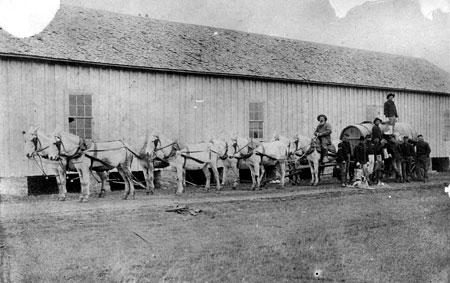
Fort Buford water wagon soon after Battle of the Little Bighorn, SHSND# A4173
The garden, on a bench thirty feet above the river, was planted on eight freshly broken acres in May and June. Soldiers planted potatoes, turnips, carrots, leeks, cabbages, squashes, cucumbers, watermelons, muskmelons, radishes, lettuce, onions, beans, peas, tomatoes, eggplant, early corn. The corn matured and was consumed long before frost. Soldiers ate fresh vegetables until 21 September 1873 “when the garden was taken by the troops and teamsters of the Yellowstone expedition.” No irrigation was necessary to establish a “luxuriant growth of vegetables.” The soldiers also planted oats and cottonwoods. Custer acknowledged that the growing season in northern Dakota was short, but still it was long enough for most garden vegetables.
The conflict between the two widely admired officers generated comment from many others. General Rosser, overseeing the survey and construction of the NPRR, noted that his camp at Second Cheyenne (the crossing at Valley City) had a “beautiful garden” in 1872, and he asserted there were “patches all along the line which have been cultivated and have yielded vegetable and fruit in abundance.” (Stewart, p. 53)




